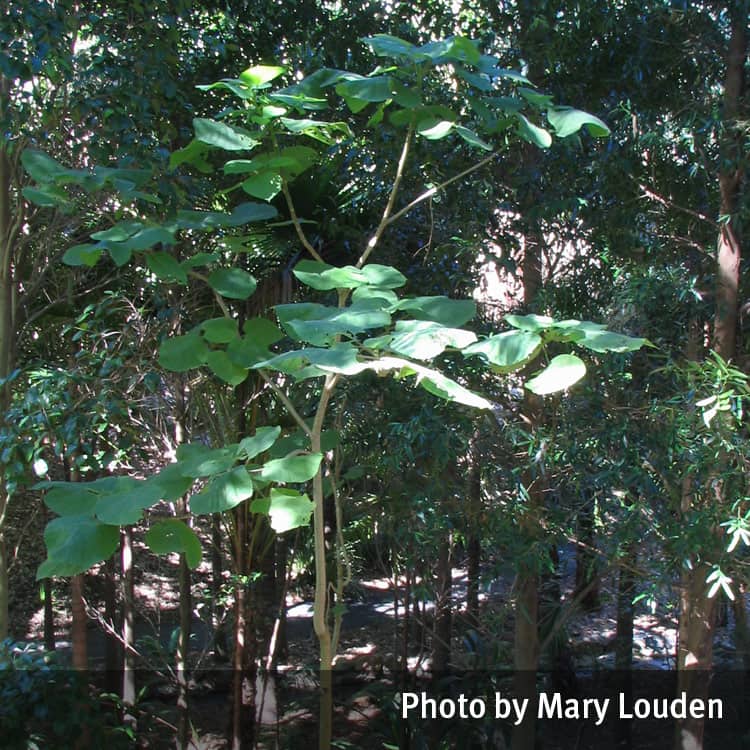Description
These species are common in Queensland rainforests especially on the edges or in disturbed areas.
The two species are similar, but can be distinguished by the leaf stalk, which is attached at the margin of the leaf in giant stinging tree (Dendrocnide excelsa), while in the stinging tree or Gimpie-gimpie (Dendrocnide moroides), the leaf stalk is attached some distance from the margin.
The flowers are very small and held in open bunches in the forks of the leaves. The leaves are clearly visible, very large, broadly ovate, pale green, hairy and often heavily chewed by insects. The young leaves have more stinging hairs than mature ones.
Toxicity
Symptoms
Contact with the leaves or twigs causes the hollow silica-tipped hairs to penetrate the skin, causing a severe stinging or sharp tingling sensation which can last for days or even months. Pain may also be referred to other areas of the body. The injured area becomes covered with small red spots joining together to form a red, swollen mass. The affected area can remain intermittently sensitive for a long period of time. It may be possible to remove the hairs by applying sticking plaster and pulling it off, or using a warm depilatory wax.
Images

Details
Common name: Stinging tree
Botanical name: Dendrocnide excelsa, (also known as Laportea gigas), Dendrocnide moroides, (also known as Laportea moroides).
Other common names: Giant stinging tree, Fibrewood, Gympie, Gimpie-gimpie
Family: Urticaceae
General description: These species are common in Queensland rainforests especially on the edges or in disturbed areas. The two species are similar, but can be distinguished by the leaf stalk, which is attached at the margin of the leaf in giant stinging tree (Dendrocnide excelsa), while in the stinging tree or Gimpie-gimpie (Dendrocnide moroides), the leaf stalk is attached some distance from the margin.
Flowers: The flowers are very small and held in open bunches in the forks of the leaves.
Leaves: The leaves are clearly visible, very large, broadly ovate, pale green, hairy and often heavily chewed by insects. The young leaves have more stinging hairs than mature ones.
Fruit/Berries: The fruit is small, nut like and borne on fleshy stalks.
Other: The sap is clear, stinging hairs are present.
Last updated: July 2023